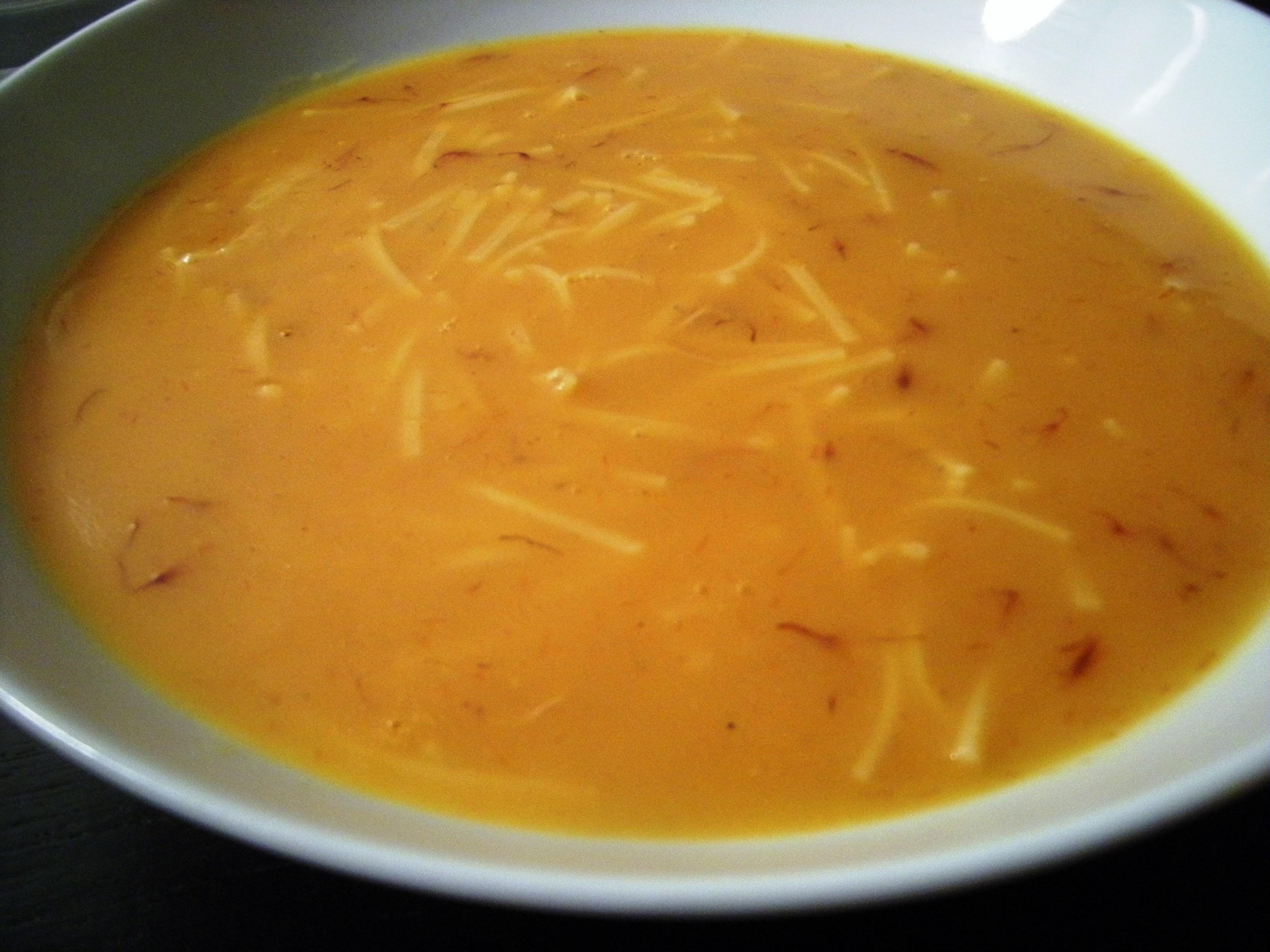
Alternate titles for this post included: One stew to rule them all, You call that a stew? THIS is a stew, and finally, The epic stew of epicness. Working in an academic lab here in NYC for the last 1.5 years, I have been exposed to many college students and their requisite speech patterns. One word I hear often (besides random) is ‘epic’, used to mean something impressive. That’s a poor definition, for a more complete definition, read on.
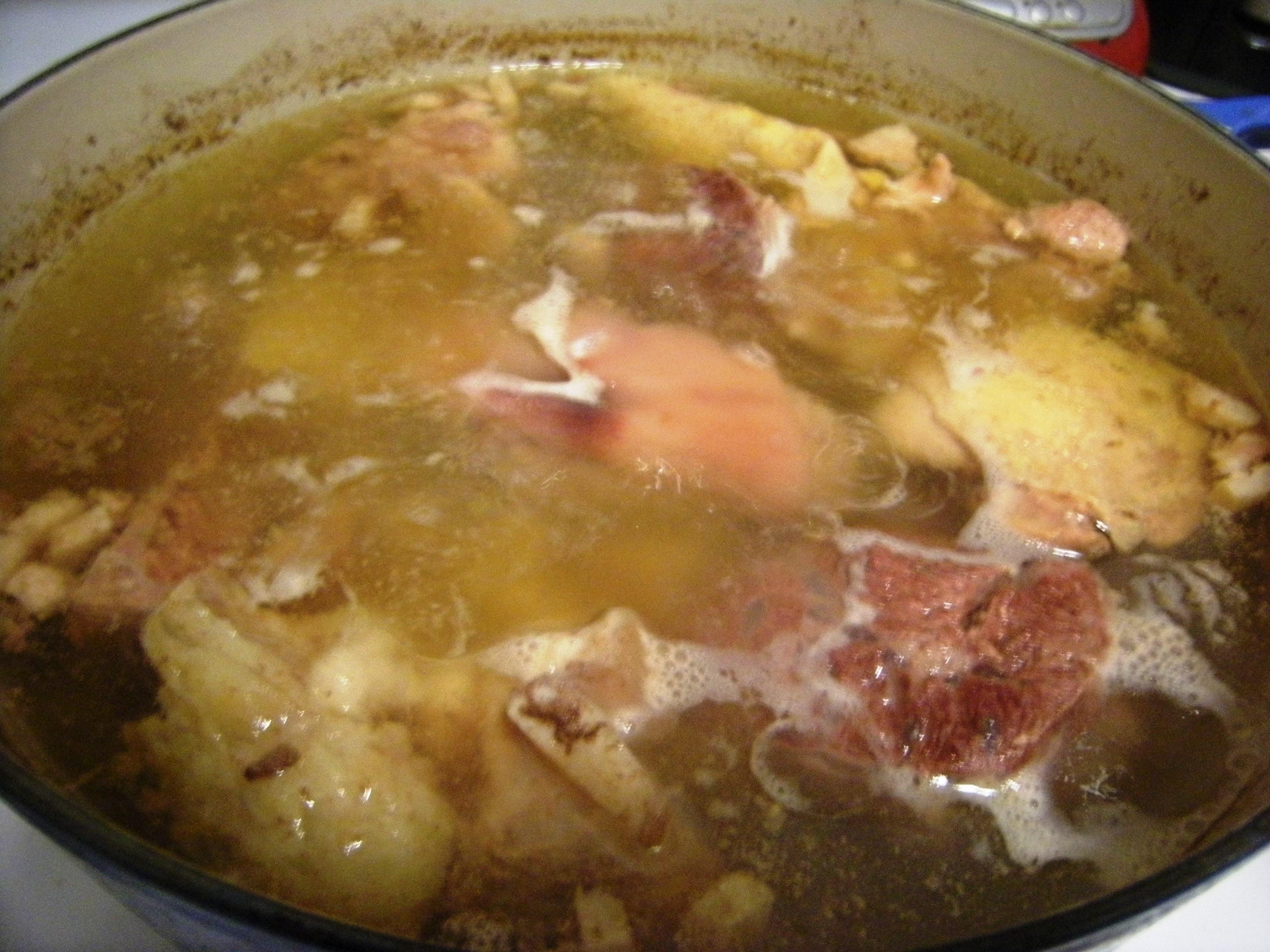
I’d like an editor’s note here about where E came up with this crazy idea, but in Spanish cooking, they have an elaborate dish of stewed meats and vegetables known as cocido. [Ed.-I first found out about this dish via A Girl in Madrid and consulted two cookbooks—Barcelona and Catalan Cuisine—to create a mash-up of a recipe]. Using the statistic that the dish contains ‘nine kinds of meat and seven vegetables’, she easily enticed me into taking a run at this beast. She knows me too well. ‘Pasta cooked in consomme’ was simply the icing on the cake.
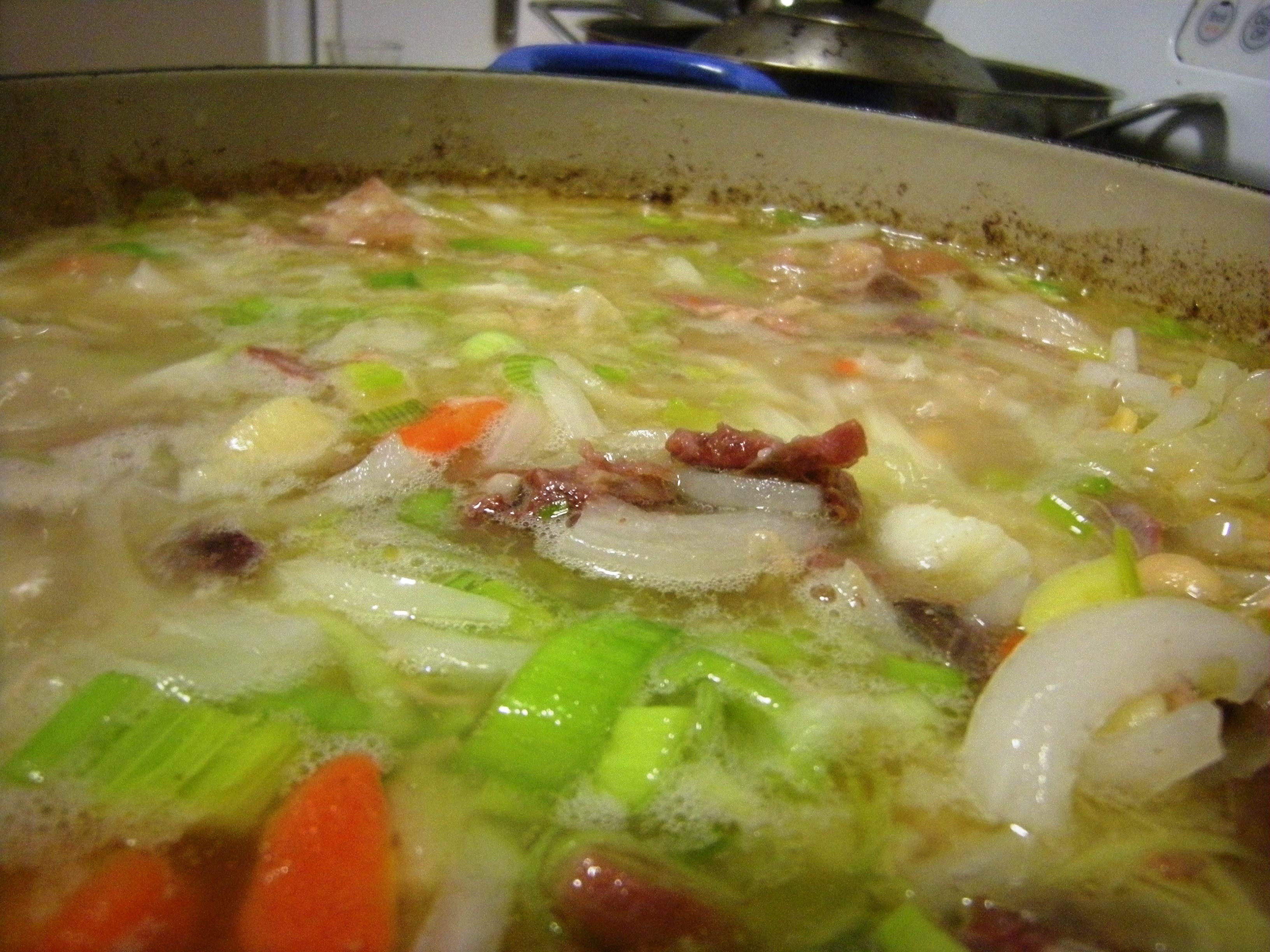
In my mind, the cooking proceeded in four stages. The first was boiling a pot of water containing beef bones, some beef shanks, chicken pieces, and a halved pig foot, skimming often for one hour. The second stage was the addition of 8 oz of soaked chick peas and another hour of cooking. Next, chopped onion, celery, carrot, parsnip, cabbage, potato and leeks and were simmered for a third hour. In the final stage, we added some meatballs we had made to the top of the pot along with some chorizos, sausage and blood sausages, covered and cooked for 30 more minutes. Finally, we strained off the broth (now so laden with gelatin that the leftovers solidified in the fridge pretty much instantly) and added it to a saucepan and used it to cook some fideos noodles.
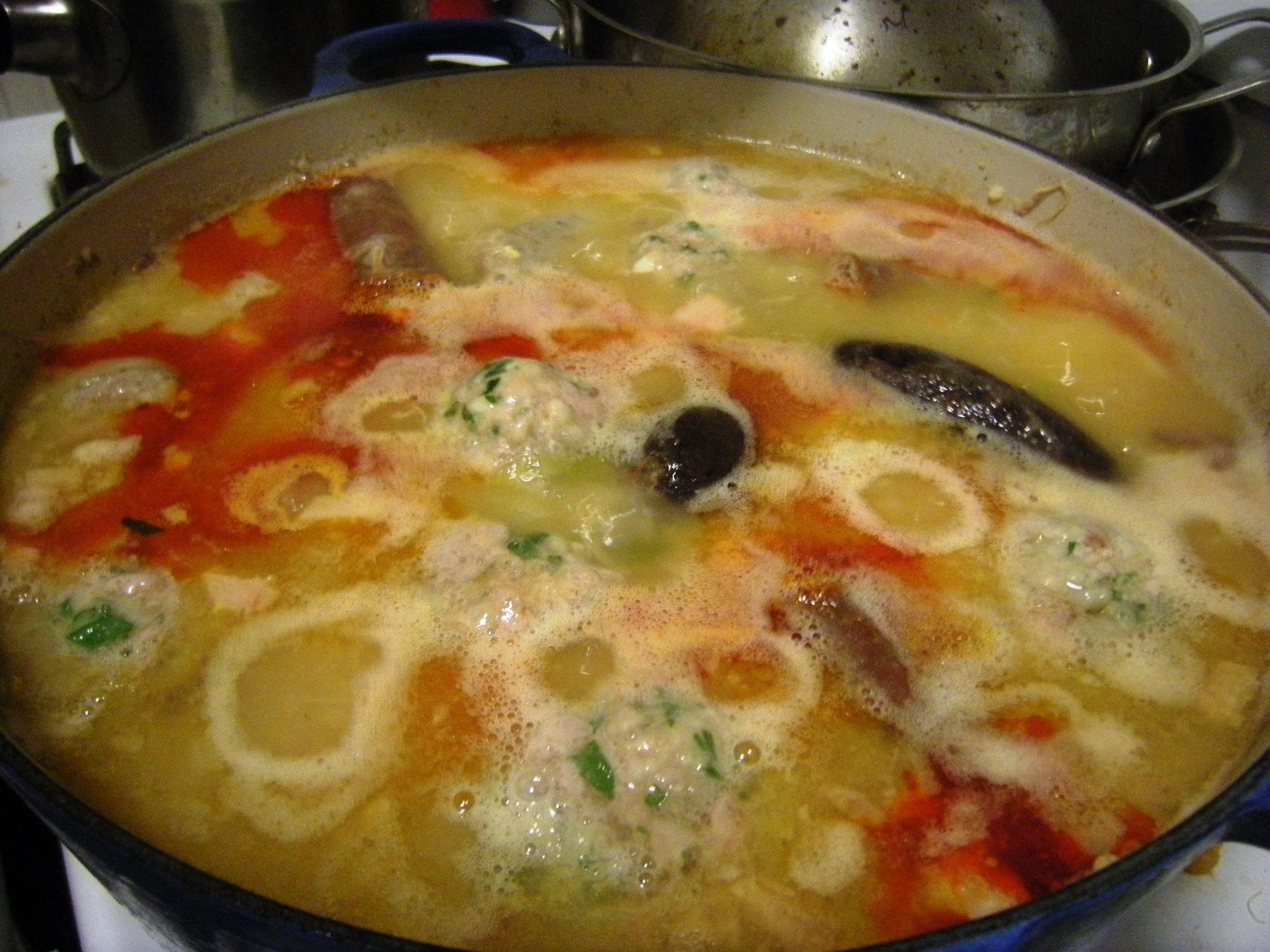
Traditionally, the cocido is consumed in two or three courses: the pasta first, then the veggies and finally the meat (or by combining the last two). I would have liked to spread it all out, but too much of the meat had broken down to make it easy to separate from the veggies. Still, it was amazing, truly mind-blowing. We had leftovers all week and I even gave some to a c0-worker for lunch after she screamed and yelled about how good it was after she tasted it the previous day. The broth is key to the dish, along with the intermingling of all the constituent flavors. It requires essentially no herb or spice additions, just some salt and pepper.
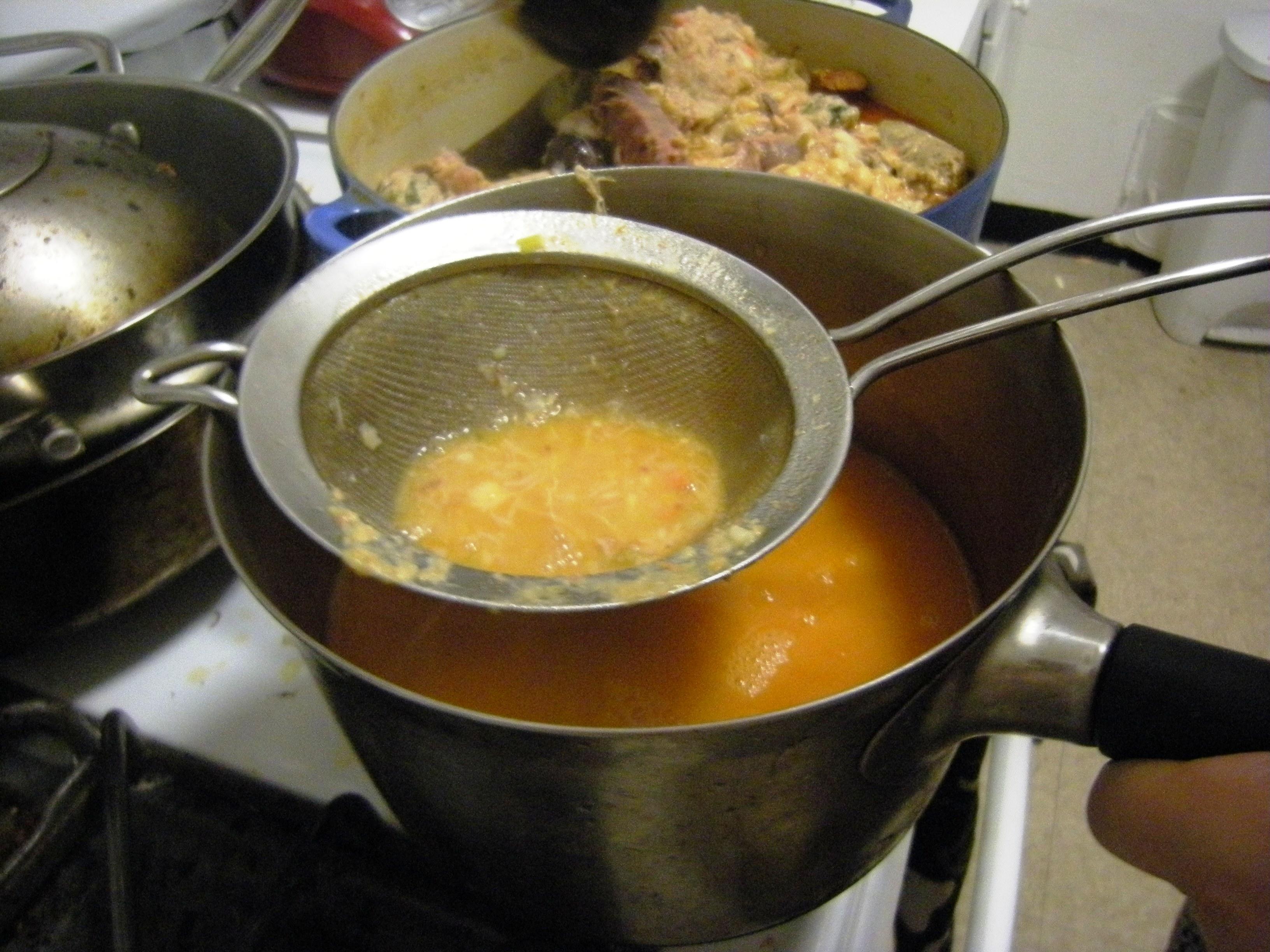
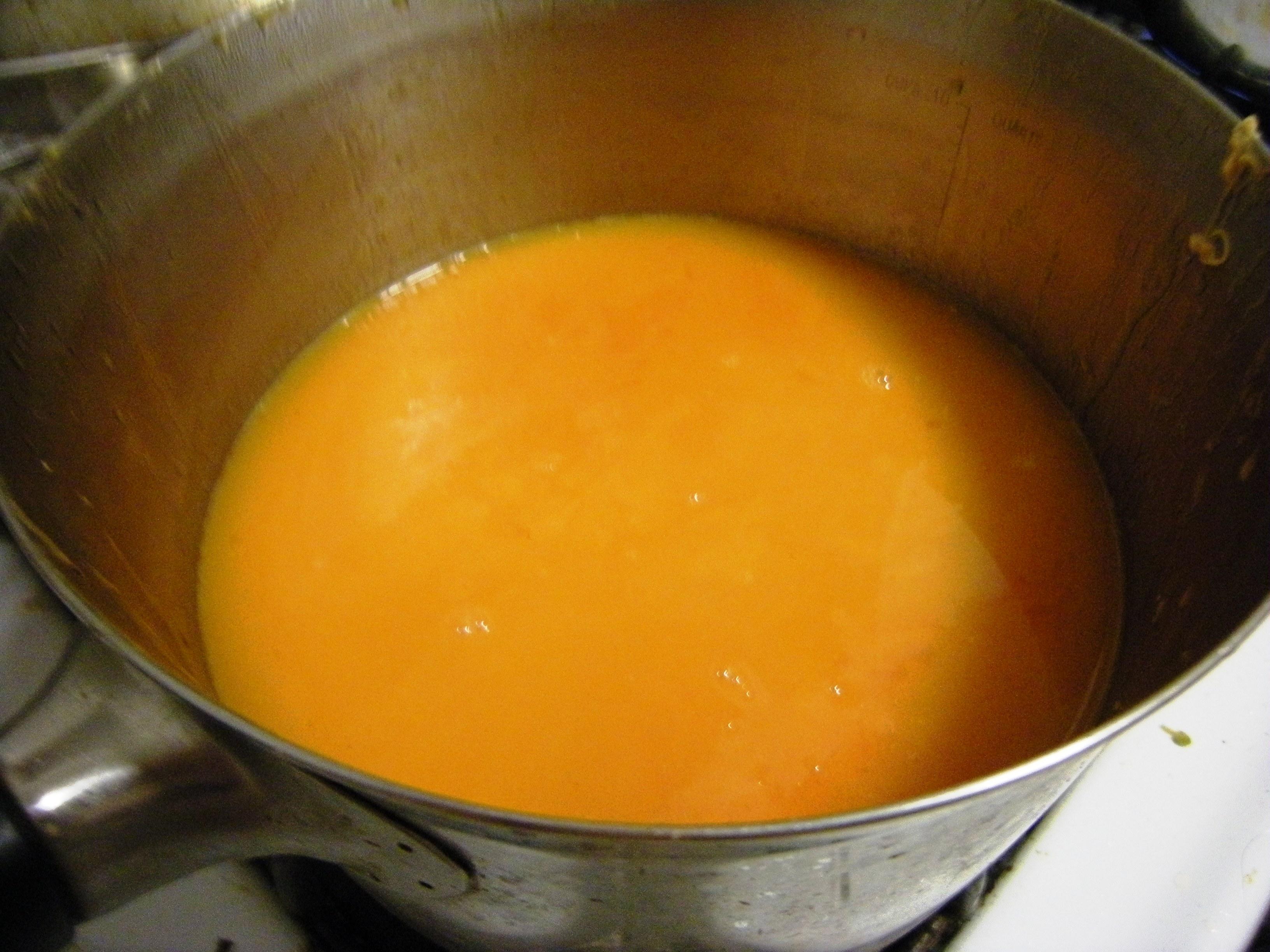
To sum up, from construction and consumption, this meal was truly epic, the stuff of legend. I will be attempting this again soon, hoping to maintain the integrity of the meats a bit more via better heat control in the middle stages. However I must reiterate, I have no regrets. So readers, I offer a suggestion to you that you try your hand at the stuff legend during these long cold days of winter. You never know, perhaps one day songs will be sung and stories told about your endeavors. Cook on!
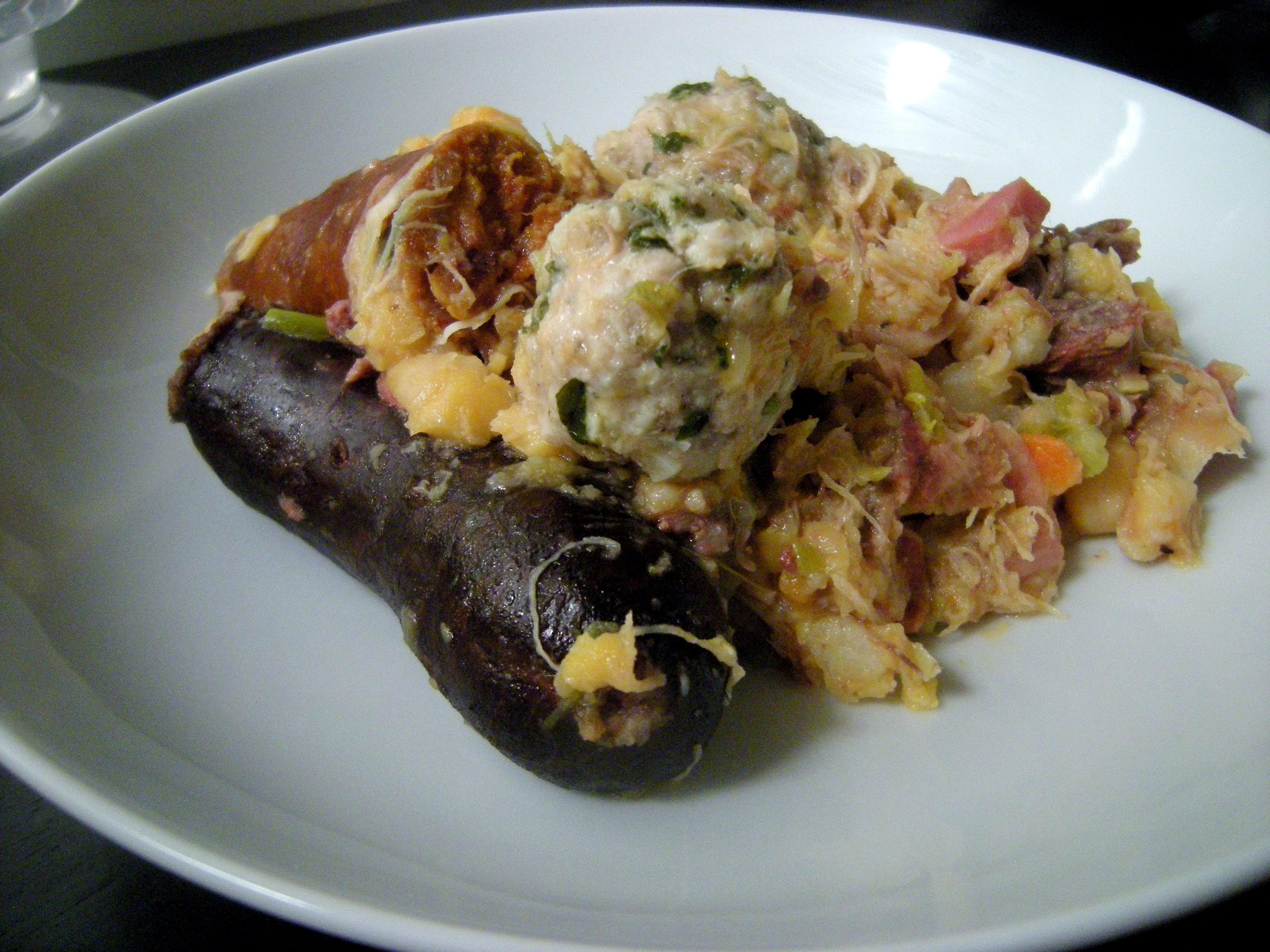
Cocido de Barcelona
adapted from Barcelona and Catalan Cuisine
Serves 10
- 1 lb beef stewing meat
- 1 lb marrow bones
- 1/2 lb pancetta, roughly diced
- 1 pig’s foot, halved
- 2 chicken thighs
- 6 oz ground veal
- 8 oz sausages, divided (4 oz crumbled and casing removed, the other kept in tact)
- 8 oz chorizo
- 2 small blood sausages/morcillas
- 1 russet potato, peeled and diced into 1-inch chunks
- 1 onion, diced
- 2 parsnips, peeled and diced
- 2 leeks, cleaned and sliced
- 1/4 head of a green cabbage, cored and thinly sliced
- 2 carrots, pelled and diced
- 8 oz of dried chick peas, soaked in cold water overnight
- 2 cloves garlic, minced
- 1 egg
- Leaves from 4 sprigs of parsley, minced
- Generous pinch of saffron/safflower threads
- 8 oz fideos/fine egg noodles
In a large, heavy pot (preferably a Dutch oven) fill it 2/3 with water and add the pancetta, marrow bones, stewing beef, chicken thighs, pig’s foot and bring to a boil. Keep the lid off and skim off any foam that appears, boiling for an hour.
Drain the chickpeas and add them to the pot, and cook for another hour. After that hour, add the potatoes, parsnips, carrots, cabbage, onion and leeks and boil for another hour.
While the cocido is boiling, make the meatballs: add the veal, crumbled ground pork egg, parsley, and minced garlic and season with salt and pepper. Roll into balls (about 10 or so), dust generously with flour, and chill in the refrigerator until ready to use.
After three hours of cooking, taste the broth (it should taste pretty amazing at this point) and season as needed with salt and pepper. Reducing the heat to low, add the meatballs, chorizos, blood sausages and raw sausage to the pot, cover and cook until the sausages and meatballs are firm and opaque (double check with a digital probe if necessary), or another 30 minutes. Remove from heat and ladle out as much of the broth as possible from the pot, pouring it through a strainer into a saucepan. In an empty saucier or other small pot, toast the saffron threads over medium heat for about five minutes and if desired, grind to a powder with a mortar and pestle (but we just kept them whole). Throw them and the fideos into the broth and simmer over low heat until the noodles are soft. Ladle into bowls for the first course, eat, and attempt to not go into a food coma.
For the second course, arrange the meats and vegetables into bowls or into a large serving platter and serve. Allow yourself to go into a food coma when you’ve had your fill.



